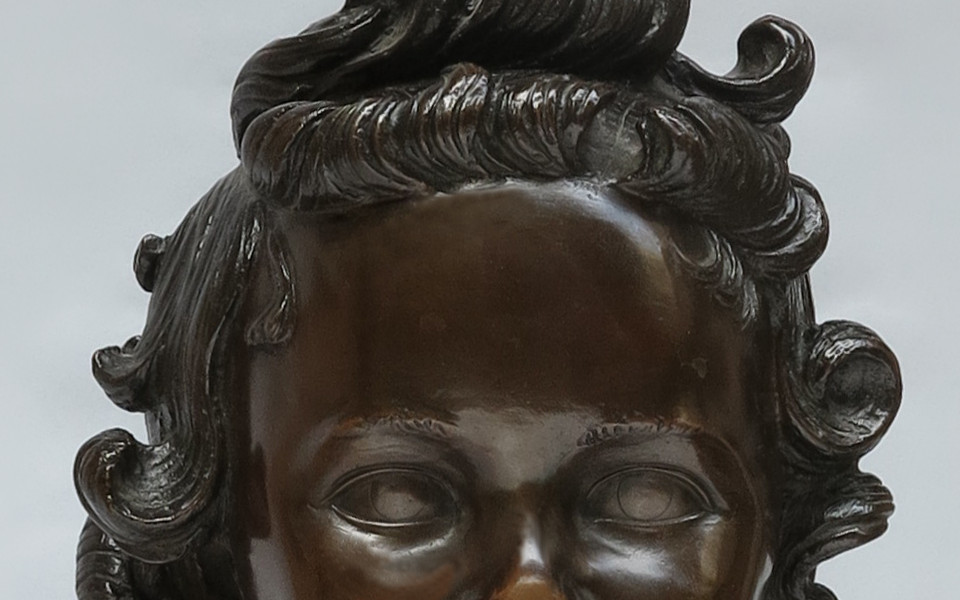
A small bronze bust by Attilio Torresini
Attilio Torresini (1884 – 1961), Venetian artist by birth and artistic training, learned sculptural techniques from his father, a skilled marble worker. After graduating from his city’s Academy of Fine Arts, he settled in Rome in 1914, managing to rent a studio in Villa Strohl-Fern – a famous residence of several artists and men of letters, still today remembered as an important landmark of twentieth-century Roman art – where he would have returned after the Fist World War and will leave only in the last years of his life.
The artist fully fits into that climate of “return to order” and recovery of the ancient Italian and Renaissance tradition that characterises the first decades of the 20th century. With the rise of Fascism, art was in fact pushed to conform in order to become an instrument of propaganda and to recall the “Roman-ness” that the regime was openly inspired by.
Like many other artists of his time, Torresini stood in antithesis to the avant-garde movements that would form in Europe, taking up the classical tradition as a value and favouring clear and sober compositions.
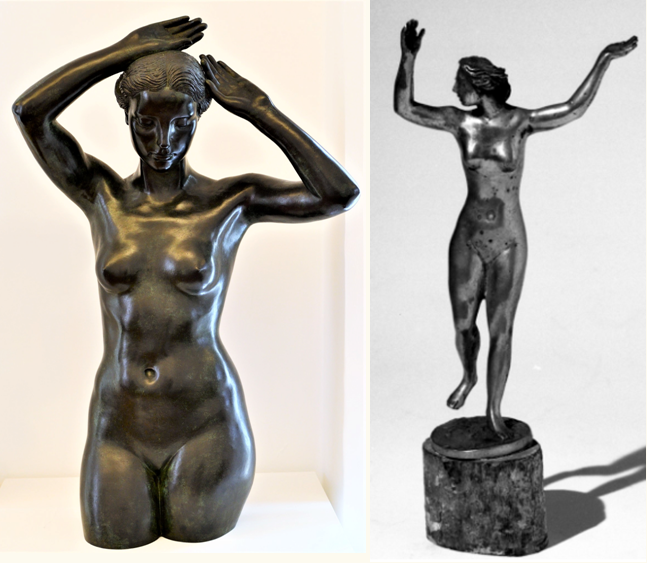
Taking a look at his relatively large production, a special predilection for the female subject is evident; the woman’s body is the protagonist of important works such as Aphrodite (1930-1934) and Bather (Woman’s Nude) (1920-1930) now exhibited at the Gallery of Modern Art in Rome, as well as many other busts and portraits.
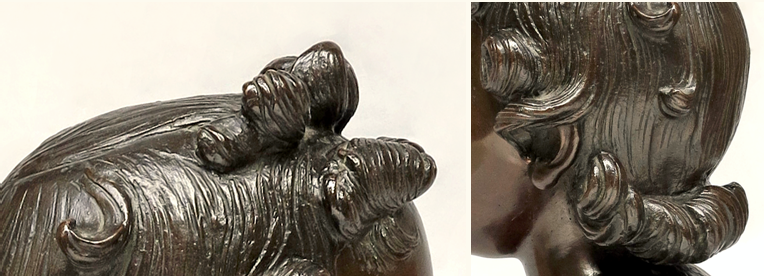
The compositional structure of his portraits does not aim at an investigation of the real, but rather at the search for an elegant formal balance. The proportionate curves of the face and the classical hairstyles reflect the already mentioned revival of the antique.

In the Bust of a Young Girl, presented here, dating from the 1940s, the light acts in a balanced alternation of solids and voids highlighting the facial features and the rendering of the hair: rich, wavy, divided into wide, hollowed-out and incised locks, which denote the refined search for the detail typical of his artistic investigation.
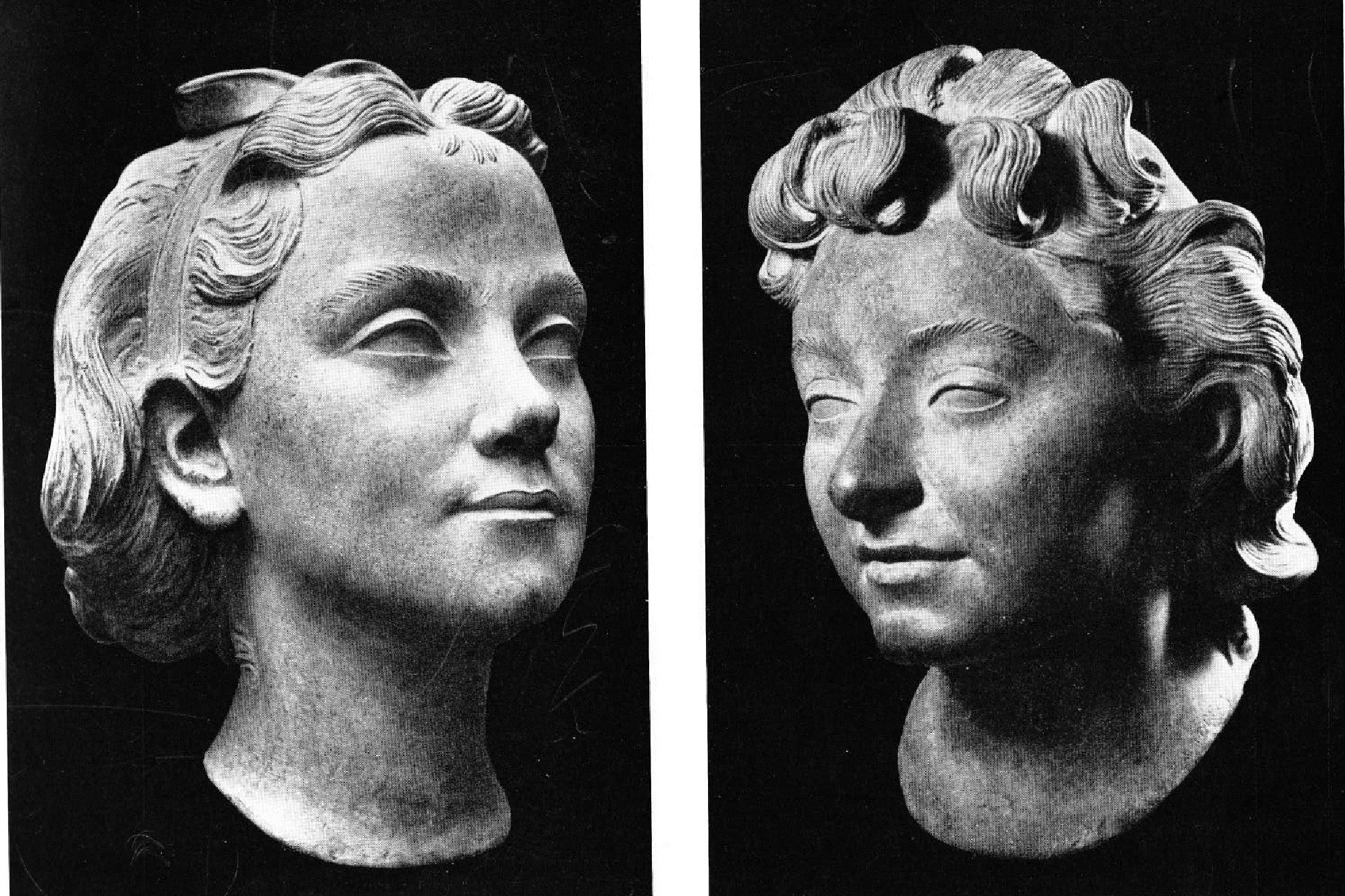
A strong stylistic and formal analogy with this bust can be found in two other bronze works by the artist, Testa Laudisa (1942) and Testa Romantica (1948), where can be noticed the same high quality hairstyle, characterized by voluminous waves framing the faces.
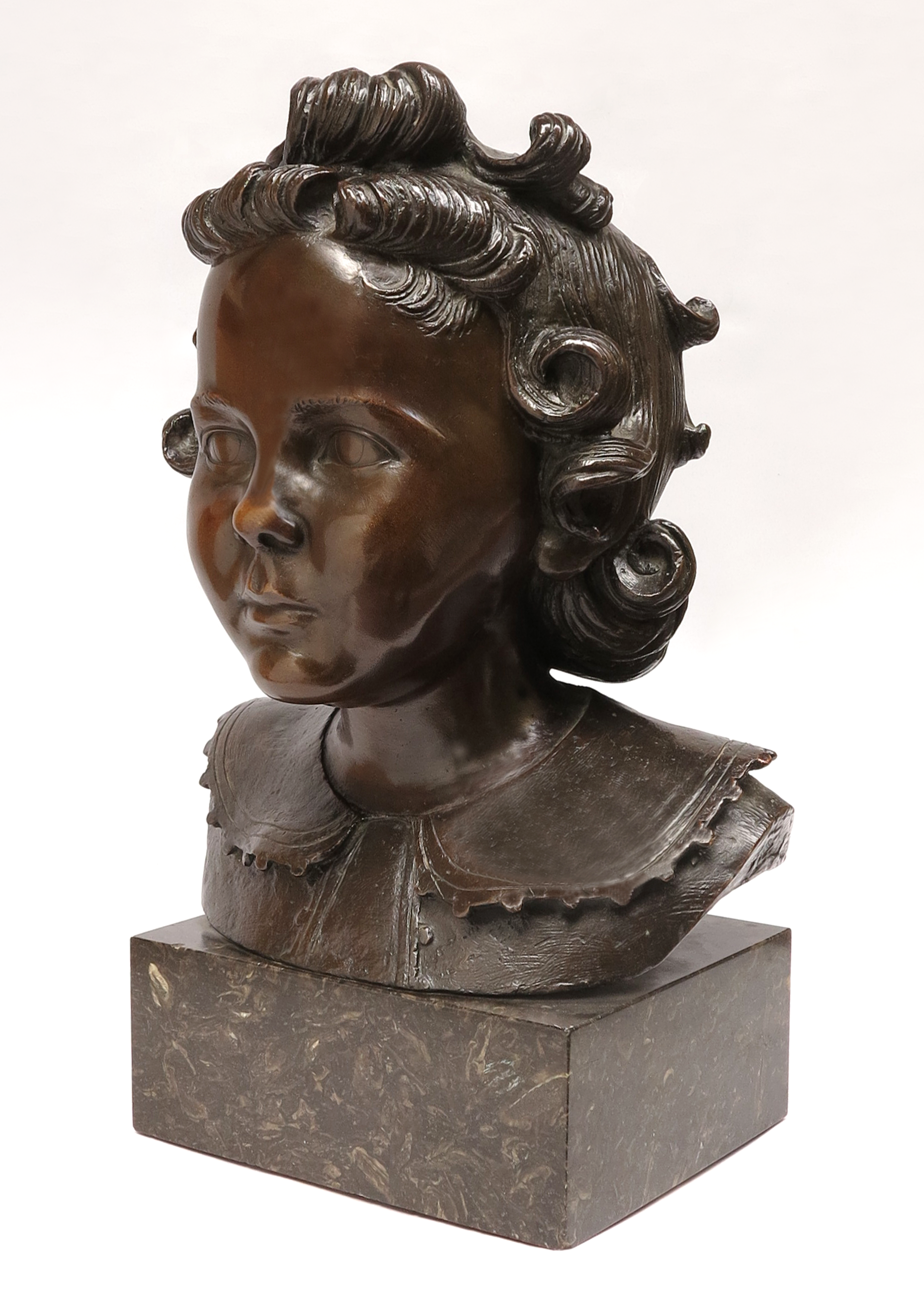
Attilio Torresini (Venice 1884 – Rome 1961)
BUST OF YOUNG GIRL
Bronze
c. 1940
Cm 22.5 x 15 x 29.5h
Signed on the back: A. TORRESINI
© 2013 – 2023 cesatiecesati.com | Please do not reproduce without our expressed written consent
Alessandro Cesati, Via San Giovanni sul Muro, 3 – 20121 Milano – P.IVA: IT06833070151